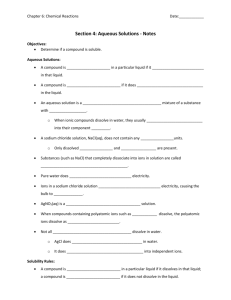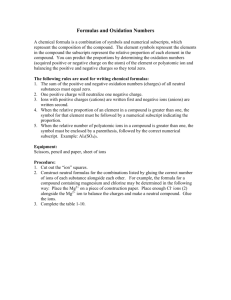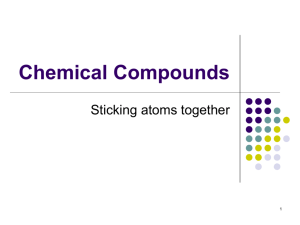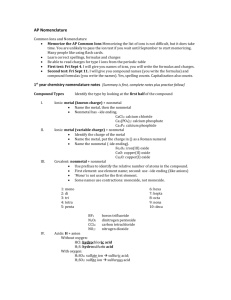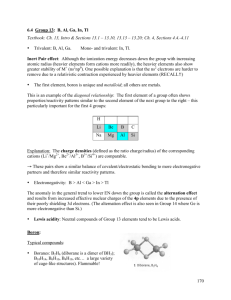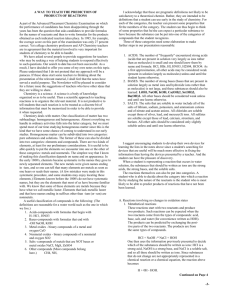Chemical Reactions 101
advertisement
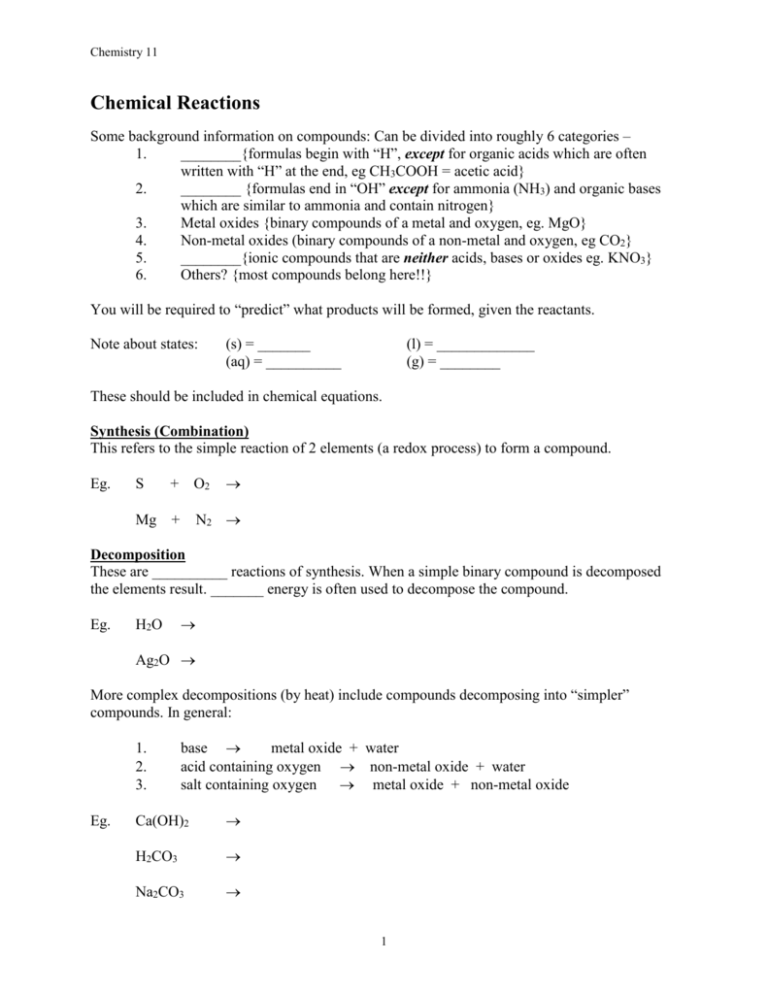
Chemistry 11
Chemical Reactions
Some background information on compounds: Can be divided into roughly 6 categories –
1.
________{formulas begin with “H”, except for organic acids which are often
written with “H” at the end, eg CH3COOH = acetic acid}
2.
________ {formulas end in “OH” except for ammonia (NH3) and organic bases
which are similar to ammonia and contain nitrogen}
3.
Metal oxides {binary compounds of a metal and oxygen, eg. MgO}
4.
Non-metal oxides (binary compounds of a non-metal and oxygen, eg CO2}
5.
________{ionic compounds that are neither acids, bases or oxides eg. KNO3}
6.
Others? {most compounds belong here!!}
You will be required to “predict” what products will be formed, given the reactants.
Note about states:
(s) = _______
(aq) = __________
(l) = _____________
(g) = ________
These should be included in chemical equations.
Synthesis (Combination)
This refers to the simple reaction of 2 elements (a redox process) to form a compound.
Eg.
S
+ O2
N2
Mg +
Decomposition
These are __________ reactions of synthesis. When a simple binary compound is decomposed
the elements result. _______ energy is often used to decompose the compound.
Eg.
H2O
Ag2O
More complex decompositions (by heat) include compounds decomposing into “simpler”
compounds. In general:
1.
2.
3.
Eg.
base
metal oxide + water
acid containing oxygen non-metal oxide + water
salt containing oxygen
metal oxide + non-metal oxide
Ca(OH)2
H2CO3
Na2CO3
1
Chemistry 11
Single Replacement
This is when an ________ reacts with a ____________. Such reactions are redox in nature (more
on that in Chemistry 12). In that compound there must be an element similar in some way to the
reacting element but _______________ The more reactive element _________ the less reactive
element. The activity of a given element is most easily predicted with a standard reduction
potential table (which is used in Chemistry 12), or by looking at the following
___________________:
METALS
NON-METALS
Decreasing activity
Lithium
Potassium
Calcium
Sodium
Magnesium
Aluminum
Zinc
Chromium
Iron
Nickel
Tin
Lead
Hydrogen
Copper
Silver
Mercury
Platinum
Gold
Eg.
Fluorine
Chlorine
Bromine
Iodine
Cl2
+ KBr
Zn
+ CuSO4
Fe
+
NaNO3
2
Chemistry 11
Double Replacement
These reactions begin with 2 ____________ _____________ and produce 2 ___________
______________. They typically occur when reactants are acids, bases or salts. Often a
formation of a __________ will result. Such reactions usually occur in _________ solutions.
Prediction of products: simply ________ the __________ ions of the two reactants.
Eg.
AgNO3
+
NaCl
HCl
+
NaOH
Refer to the solubility chart in your data booklet. NOTE that a ______ solubility compound
means that it will be a ________ in water (insoluble in water). In contrast a _________
compound will exist as an _________ solution.
If the compound is ________ in water, that means that it can separate (or _________) into its
aqueous ions. If the compound is _________ in water, it __________ ___________ into its
respective ions. A net-ionic equation shows the ________ reaction that is occurring. Certain
ions are not included because they do not officially participate in the reaction (such ions are
known as ______________ ______).
Combustion
Any reaction that involves _______________ as a reactant is considered to be a combustion.
Substantial amounts of ____________ are usually produced as well. This includes burning of
metals in air or oxygen, as well as combustion of ___________ (organic compounds made of
hydrogen and carbon). In general, combustion of hydrocarbons produces __________ and
_______. This is true whether or not oxygen is present in the hydrocarbon. Hydrocarbons that
contain halogens, nitrogen or sulphur usually form oxides of the elements as well. These are
difficult to predict, although in the case of nitrogen, NO or NO2 would always be a reasonable
guess. Some examples are found below:
Li
+
O2
C4H10
+
O2
C5H12S +
O2
3




